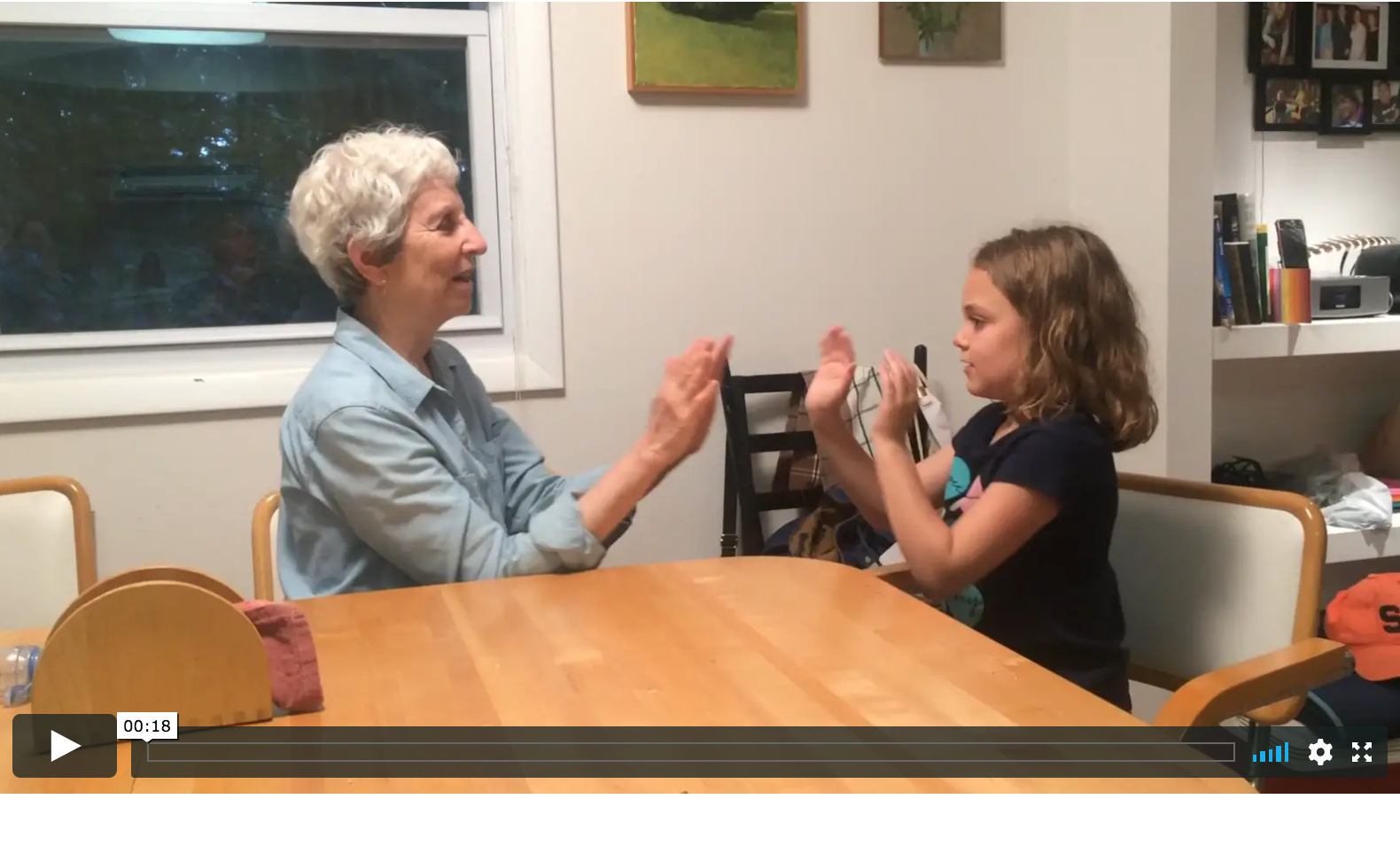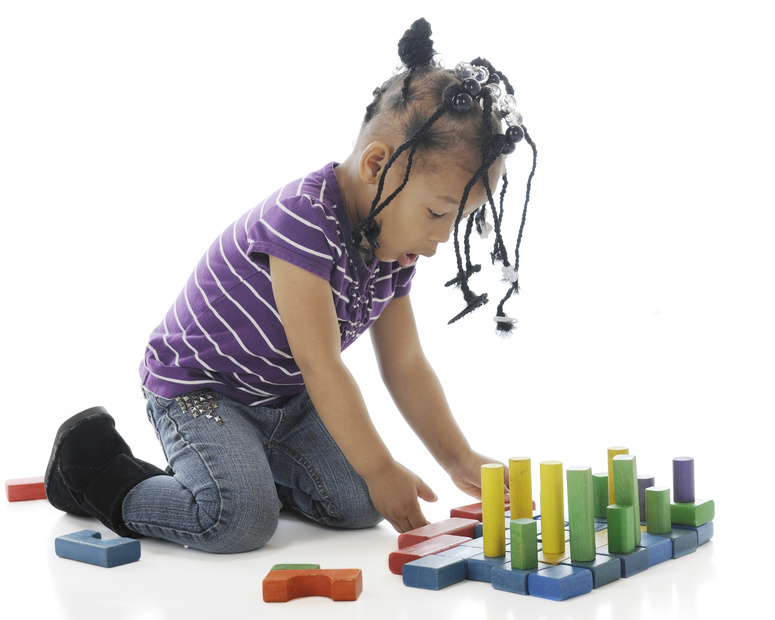The environment constantly exposes young children to regularities of various types: in music, shirts, dance, shape, and spatial relations. Given these experiences, children ages three through six years old develop an intuitive understanding of pattern. The goal of this article is to show how children develop intuitive pattern knowledge in everyday life.
 It is said that “math is all around us.” This is definitely true of pattern. This picture was taken in a playground and shows the rear view of a slide. Suppose you are a child standing at the bottom of this ladder. Looking upward gives you abundant opportunities to detect patterns. The horizontal steps alternate with an upright wall, with a constant distance between them. The perforations in the metal walls are in a kind of honeycomb arrangement. You may see that the holes go across in a straight line, up and down in a straight line, and form diagonals as well. The wall’s top row has six holes and the row below it has seven, and the pattern repeats down to the bottom. The ladder goes upward at a constant angle, so the vertical sides of the ladder are parallel to one another. At the top is a structure involving curved metal on both sides, as well as a collection of vertical bars. The structure is symmetrical: the metal bars on the right mirror those on the left. Climbing up (and sometimes down) the ladder, a child has the opportunity to perceive at least some of these features. The child must learn that the ladder goes up, up, and up. The child may learn that the wall of the steps contains a regular array of holes.
It is said that “math is all around us.” This is definitely true of pattern. This picture was taken in a playground and shows the rear view of a slide. Suppose you are a child standing at the bottom of this ladder. Looking upward gives you abundant opportunities to detect patterns. The horizontal steps alternate with an upright wall, with a constant distance between them. The perforations in the metal walls are in a kind of honeycomb arrangement. You may see that the holes go across in a straight line, up and down in a straight line, and form diagonals as well. The wall’s top row has six holes and the row below it has seven, and the pattern repeats down to the bottom. The ladder goes upward at a constant angle, so the vertical sides of the ladder are parallel to one another. At the top is a structure involving curved metal on both sides, as well as a collection of vertical bars. The structure is symmetrical: the metal bars on the right mirror those on the left. Climbing up (and sometimes down) the ladder, a child has the opportunity to perceive at least some of these features. The child must learn that the ladder goes up, up, and up. The child may learn that the wall of the steps contains a regular array of holes.
The slide affords the opportunity of observing many regularities and detecting many patterns. Will a young child be able to analyze the patterns in the same way an adult would? Of course not. Although children certainly see the ladder, and over time acquire a good deal of experience with its spatial patterns, they cannot abstract and describe them like adults can. The child probably knows little explicitly about angles or parallel lines or reflection symmetry (when one side is a mirror image of the other) or alternating numbers. Also, failing to overcome the perspective from which he or she perceives the rear of the slide, the child may see the stairs near the top as narrower than those at the bottom.
The bottom line (so to speak) is that young children have considerable everyday experience with patterns but also have a good deal to learn about them. You might say that children are on the first rung of pattern knowledge ladder but need a lot of help in order to ascend the steps (with parallel sides) of higher understanding of, and thinking about, patterns. Thus, the teacher can use children’s intuitive knowledge of pattern to promote algebraic thinking (that is, reasoning about pattern).
 Finally, it is important to recognize that experience with, and knowledge of, patterns is a cognitive universal. Children everywhere, regardless of culture and socioeconomic status, encounter huge numbers of patterns and develop an intuitive, informal understanding of them. Cultures vary in the kinds of experiences they offer, but no culture lacks interesting regularities to explore, whether they be found in weavings, plants, music, the seasons, or animals.
Finally, it is important to recognize that experience with, and knowledge of, patterns is a cognitive universal. Children everywhere, regardless of culture and socioeconomic status, encounter huge numbers of patterns and develop an intuitive, informal understanding of them. Cultures vary in the kinds of experiences they offer, but no culture lacks interesting regularities to explore, whether they be found in weavings, plants, music, the seasons, or animals.



